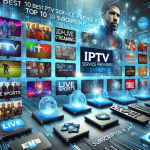Deciding where to allocate your digital marketing budget is no small task. Should you funnel resources into social media platforms where engagement is high and storytelling thrives? Or should you go with Google Ads, known for capturing intent-driven traffic at the moment users are searching? This question is more relevant than ever as businesses seek to make the most of every dollar. Whether you’re an in-house marketer or working with an agency offering internet marketing services, the choice between social media and Google Ads is critical to campaign success.
In this article, we’ll break down the strengths and limitations of each channel, explore real-world use cases, and offer guidance on where to invest depending on your goals, audience, and budget.
The Psychology Behind the Click: Intent vs. Engagement
At the core of this debate lies a fundamental difference in user behavior. Google Ads targets users based on search intent. When someone types “emergency plumber near me” or “buy running shoes online,” they’re expressing a direct need. Google Ads captures these moments, offering solutions at the exact time a person is ready to act.
On the other hand, social media advertising focuses on engagement and discovery. Users are not actively searching for a solution; they are scrolling, reacting, and consuming content. Ads here are interruptions—welcome ones if well-targeted, but still interruptions. That makes storytelling, visuals, and emotional hooks essential in grabbing attention.
So while Google Ads aims to convert high-intent users, social media aims to build brand awareness and nudge users along the buyer’s journey.
Performance Metrics: Comparing ROI, CPC, and Beyond
Let’s talk numbers. Return on Investment (ROI) and Cost Per Click (CPC) are essential metrics for evaluating campaign performance. Here’s a quick comparison:
Google Ads:
- Typically has a higher CPC because you’re bidding on users with high buying intent.
- Can yield high ROI, especially for e-commerce or service-based businesses with urgent needs.
- Offers granular control over keywords, demographics, time of day, and device targeting.
Social Media Ads (e.g., Facebook, Instagram, LinkedIn):
- Generally has a lower CPC but may require more impressions to convert.
- ROI can be harder to track, especially if your campaign is focused on brand awareness or engagement.
- Powerful for audience building, storytelling, and nurturing leads through content.
Which offers better value? That depends on your goals. If you need quick conversions, Google Ads might be your best bet. If you’re building a brand or introducing a new product, social media could provide more visibility per dollar spent.
Use Case Scenarios: When to Use What
Let’s explore real-world applications to see how each platform shines in different scenarios.
1. Product Launch
Use Social Media: If you’re launching a new product or service, you want to create buzz and excitement. Social platforms allow you to run teaser campaigns, influencer collaborations, and engaging countdowns.And to keep your links clean and trackable, always use a link shortener.
Complement with Google Ads: Run branded search ads to capture traffic from users who heard about your product on social but are now Googling it.
2. Lead Generation
Use Google Ads: Particularly effective for B2B and service-based businesses where users are searching for solutions. A well-crafted landing page and relevant keywords can bring high-quality leads.
Use Social Media: For longer sales cycles or complex services, social media can nurture prospects with educational content, testimonials, and case studies.
3. Event Promotion
Use Social Media: Social is a natural fit for promoting webinars, workshops, or in-person events. You can target local audiences, use video previews, and leverage social proof.
Complement with Google Ads: Capture searchers who are looking for events “near me” or specific types of workshops in your industry.
4. Retargeting
Use Both: This is where integration matters. Google Display Network and Facebook Pixel allow you to retarget visitors who didn’t convert. Serving relevant ads based on behavior increases the likelihood of conversion.
Analytics and Attribution: The Invisible Battleground
Tracking performance is both a science and an art. One of the biggest challenges marketers face is determining which channel deserves credit for a conversion. This is where attribution models come into play.
- Last Click Attribution: Often favors Google Ads, as conversions typically occur after a search.
- First Click Attribution: May favor social media, which introduces the user to your brand.
- Linear or Time Decay Models: Offer a more balanced view by giving partial credit to all touchpoints.
Use tools like Google Analytics 4, Meta Ads Manager, and third-party platforms to analyze multi-channel funnels. Avoid the trap of overvaluing one platform simply because it’s the last click before conversion.
So, Where Should You Invest?
There is no one-size-fits-all answer. Your best bet is to let your business goals lead the way:
- Need fast conversions? Prioritize Google Ads.
- Building a brand or launching something new? Lean into social media.
- Have the budget and bandwidth? Run both, and optimize based on real data.
Ultimately, the smartest marketers don’t see this as an either/or scenario. They recognize the synergy between platforms and design campaigns that move users from awareness to conversion across multiple touchpoints.
Understanding how to balance social media and Google Ads within your overall internet marketing services strategy can be the key to sustainable growth. With clear goals, thoughtful testing, and ongoing optimization, you can maximize your return while delivering real value to your audience.







